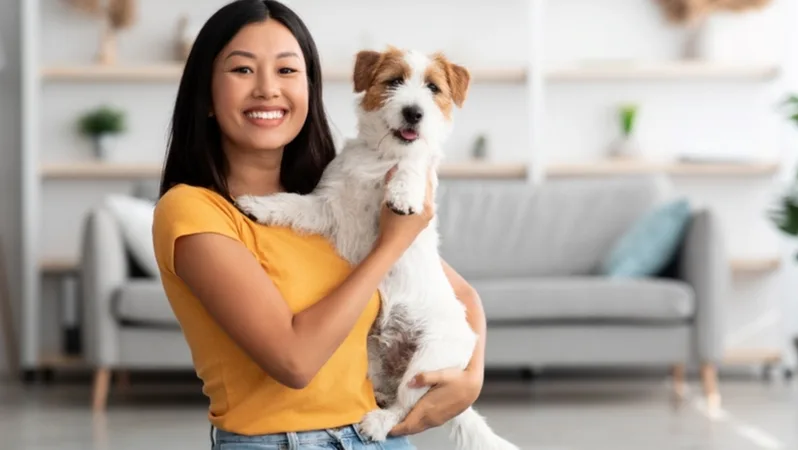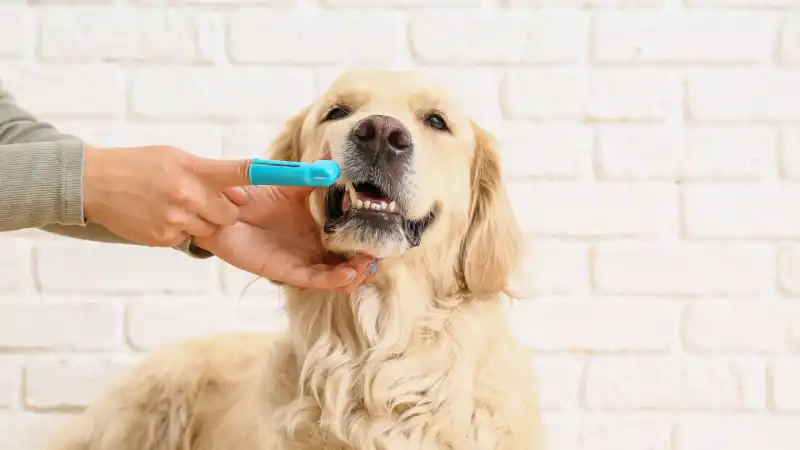Deep-Chested Dog Breeds and Breathing Problems: When to See a Vet
Respiratory issues are common in deep-chested dog breeds. Here are two life-threatening conditions, treatment options & when it's time to take your dog to the vet.

Every breed of dog is unique, and each one comes with its own set of advantages and health risks. As a dog owner, it's important to understand what health conditions your dog's breed is predisposed to. This will help you keep an eye out for early signs of trouble and take preventative measures to keep your dog as healthy and happy as possible.
One health concern that's common in deep-chested dog breeds is respiratory problems. This article will help you determine if you have a deep-chested dog. You'll also learn about two common, often life-threatening, conditions that can affect your deep-chested dog's breathing.
Does Your Dog Have a Deep Chest?
Deep-chested dogs have narrow, tall rib cages that fall lower on their body – usually below the elbows of the dog's front legs. Their chest is typically egg- or oval-shaped, and taller than it is wide.
Many of these breeds were bred for hunting or working, so their long chests give them extra lung capacity for running and endurance activities.
Common dog breeds with deep chests include:
Basset Hounds
Doberman Pinschers
Great Danes
Greyhounds
Irish Setters
Old English Sheepdogs
Saint Bernards
Standard Poodles
Weimaraners
Gastric Dilatation and Volvulus in Deep-Chested Dogs
Dogs with deep chests are at a higher risk of Gastric Dilatation and Volvulus (GDV), which is also known as bloat. This life-threatening disorder happens when a dog's stomach fills with gas, leading to a gastric dilatation (or bloat).
In some cases, the condition stops at bloat, but in severe cases, the dog's stomach will twist, blocking off both the exit and entrance. This is known as a volvulus. While this condition is primarily digestion-related, the bloating of the stomach presses on the diaphragm, which causes breathing issues.
Causes of Bloat
Unfortunately, veterinarians are still unsure of the actual cause of GDV in dogs, but they do suspect that it's related to the amount of air that your dog takes in while eating.
Dogs will typically develop bloat after ingesting a large amount of food or water very quickly. In addition to being deep-chested, other potential factors that put your dog at risk include:
Being an older dog
Eating dry food with fat or oil in the first 4 ingredients
Eating from an elevated food bowl
Exercising immediately after eating
Weighing more than 99 pounds (risk increased by 20%)
Symptoms of Bloat
Bloat is a serious, life-threatening medical condition, so it's important to recognize the symptoms quickly and seek medical attention as soon as possible.
Signs of bloat in dogs include:
Abdominal distention
Collapse
Downward-facing dog pose
Dry heaving without vomiting any food
Guarding their stomach
Pacing, restlessness, or sudden anxiety
Pale gums
Panting, difficulty breathing, and drooling
Racing heartbeat
Vomiting white foam
Treatment Options
If your dog is in the beginning stages of bloat and it hasn't progressed into volvulus yet, treatment can be simple. Your dog will be hospitalized and given IV fluids to keep them hydrated and treat shock. They may also be walked to help stimulate their gastrointestinal tract and help the gas move through their body.
If your dog's stomach is twisting, the treatment will be more intensive. Your dog will still be hospitalized and given IV fluids to improve the circulation to their vital organs, as well as to treat shock. They will also be given pain medication to treat the discomfort, as GDV is a painful condition for your dog.
From there, a procedure can be performed to remove gas from the stomach. In some cases, this helps untwist your dog's stomach, but in other cases, your dog must undergo surgery to untwist the stomach manually.

Every Dog and Cat Deserves the Pet Insurance of Champions
Get prize-winning care for your pets.
Spontaneous Pneumothorax in Deep-Chested Dogs
Spontaneous pneumothorax is a condition in which air leaks from the lungs or large air passages and collects in the chest space outside the lungs. This occurs without your dog being injured or suffering from trauma in any way.
While the condition may appear and progress slowly, many dogs experience a sudden onset of breathing difficulty.
Causes of Spontaneous Pneumothorax
The most common cause of spontaneous pneumothorax is bullous emphysema, a condition where the airspaces in your dog's lungs are dilated, allowing for air to be inhaled but not exhaled.
Other potential causes for the condition include:
Allergic bronchitis
Foreign body migration
Heartworm disease
Inflammatory airway disease
Lung abscesses
Lung cancer
Lungworms
Pneumonia
Tracheal rupture
Symptoms
Getting your dog started with treatment plans as soon as possible, as well as diagnostic testing for any underlying lung conditions, is important for their overall health.
Contact your veterinarian if you notice any of these symptoms:
Difficulty breathing
Pale or bluish mucous membranes
Rapid breathing
Rapid heartbeat
Respiratory distress
Shock
Subcutaneous emphysema, or air trapped under the skin
Treatment Options
Your dog's treatment plan will ultimately depend on the underlying cause of their symptoms and their current health condition. Your dog will likely require hospitalization to help stabilize and monitor their breathing with oxygen therapy until the air inside their chest cavity stops building.
If your dog is experiencing respiratory distress, your veterinarian may also extract air from their chest cavity to help the lungs expand.
From there, they will need to treat the cause of your dog's pneumothorax, which can mean surgery to remove a localized abscess or obstruction in the lungs. Your dog will also require strict rest for at least a week after treating their pneumothorax to help prevent it from returning.
When Should You Take Your Dog to the Vet?
Breathing-related health conditions can be life-threatening for dogs, so it's vital to take any signs of respiratory distress seriously. If you notice a change in your dog's behavior, monitor their symptoms closely. If they are breathing rapidly, struggling to breathe, panting, or otherwise in distress, contact your veterinarian immediately to discuss potential causes and treatment options.
If you have a deep-chested dog, you may want to consider a dog insurance policy that covers pre-existing conditions. AKC Pet Insurance (underwritten by Independence American Insurance Company) is the ONLY brand that offers pre-existing condition coverage for curable and incurable conditions after a 12-month waiting period*.
*Not available in all states.

Every Dog and Cat Deserves the Pet Insurance of Champions
Get prize-winning care for your pets.

Richard has shared his life with pets since childhood, and currently has a rescue cat and dog. He works with veterinarians and pet businesses to improve their content. To find out more, please visit his [website](https://richardrowlands.com/).
READ MORE ARTICLES

